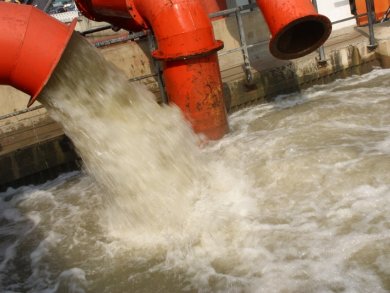Bacterial resistance to antibiotics is a growing concern. Even low environmental levels of antibiotics can result in increased bacterial resistance at specific locations. Recently, there have been reports of high levels of several broad spectrum fluoroquinolone antibiotics in effluent and surface water from an Indian wastewater treatment plant.
Joakim Larsson and colleagues, University of Gothenburg, Sweden, have used culture-independent shotgun metagenomics to investigate microbial communities in these river sediments. River sediment samples were collected up- and downstream from an Indian waste water treatment plant.
High-throughput sequencing of DNA in the samples showed bacterial diversity downstream was slightly lower than upstream, and very high levels of resistance genes were identified. Elements for horizontal gene transfer, including integrons, transposons and plasmids were also detected. These help spread resistance between bacterial species including to human pathogens.
- Pyrosequencing of Antibiotic-Contaminated River Sediments Reveals High Levels of Resistance and Gene Transfer Elements
E. Kristiansson, J. Fick, A. Janzon, R. Grabic, C. Rutgersson, B. Weijdegård, H. Söderström, D. G. J. Larsson,
PLoS ONE 2011, 6(2), e17038.
DOI: 10.1371/journal.pone.0017038




